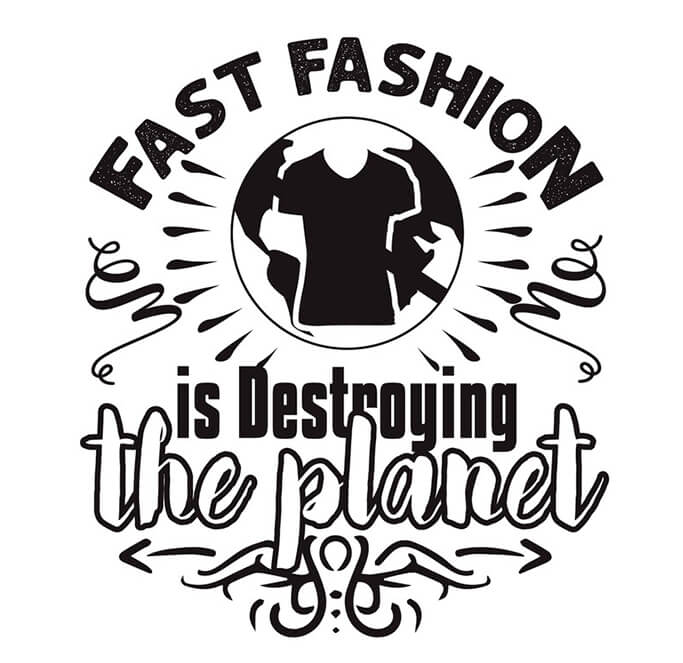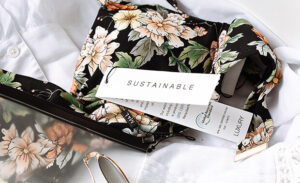Cheap and fashionable clothing lines are satisfying customers around the globe, but on the other hand, those fast fashion brands contribute to landfill pollution. Fast fashion is at its peak because of its low-cost and fast production that follows every trend on the market.But how much does fast fashion actually cost us?
Fast fashion has become a major environmental problem in recent years. The production of clothes, in particular, has an outsized impact on the environment due to the massive amount of resources and energy used to create them. This overconsumption of resources has dire consequences, including air and water pollution, hazardous waste, and climate change.
What is Fast Fashion?
Fast fashion is considered to be fashion that is rapidly following trends and copying other brands. Brands that are fast-fashion have low costs of production and distribution, which lead to cheap prices for consumers. The idea is to concentrate on the quantity but not on the quality of the final product. The first paths of fast fashion started in the 1990s in New York City.
Next to oil, fashion in its broadest sense, fast fashion, to leather to denim, is the next biggest industrial polluter of the world’s waterways.
Mark Angelo
Why is fast fashion dangerous for us and our planet?
According to the UN Environment Programme (UNEP), the fashion industry is the second-biggest consumer of water in the world, and it is responsible for about 10% of global carbon emissions. One whole garbage truck of clothing is burned in a landfill every second. Three main contributors to pollution are:
- Dyeing and finishing about 40%
- Yarn preparation – about 30%
- Fiber production – about 15% Fast-fashion- consumes enormous amounts of natural resources, like water and land. It is polluting the environment with chemicals used for the production of textiles. Also, a significant amount of energy is used to produce an enormously large quantity of clothes. Consumption of water – The fashion industry is the second largest consumer industry of water. According to World Resources Institute, One pair of jeans needs about 2700 liters of water, which is enough water for one person to drink for 2.5 years! Textile dye has toxic chemicals which pollute the environment by ending up in groundwaters. Consumption of energy – Cotton in fast fashion clothing is not eco-friendly to produce. Growing cotton on a large scale requires using a lot of pesticides, which can cause health problems for the farmers and people who handle the entire process. Organic cotton is a better option, so beware of the product labels.
General pollution – Brands use synthetics, like polyester, nylon, viscose, or acrylic fibers, which need years to biodegrade. They leave microplastic behind, which is a great polluter. Up to 40% of microplastics found in the ocean come from synthetic textiles.
“The True Cost” documentary from 2015. revealed that the world consumes around 80 billion new clothes every year. That is creating massive clothing pollution in our landfills. We can see endless clothing landfills in Chile, Africa, and China.
Also Read: Switching to Vegan cosmetics. Why is it better than using products with chemicals?
Fast Fashion and pollution
Fast fashion consumes enormous amounts of natural resources, like water and land. It is polluting the environment with chemicals used for the production of textiles. Also, a lot of energy is used to produce an enormously large quantity of clothes.
Consumption of water – The fashion industry is the second largest consumer industry of water. According to World Resources Institute, It is estimated that one pair of jeans needs about 2700 liters of water, which is enough water for one person to drink for 2.5 years! Textile dye has toxic chemicals which pollute the environment by ending up in groundwaters.
Consumption of energy – Cotton in fast fashion clothing is not eco-friendly to produce. Growing cotton on a large scale requires using a lot of pesticides, which can cause health problems for the farmers and people who handle the entire process. Organic cotton is a much better option, so beware of the product labels.
General pollution – Brands use synthetics, like polyester, nylon, viscose, or acrylic fibers, which need years to biodegrade. They leave microplastic behind, which is a great polluter. Up to 40% of microplastics found in the ocean come from synthetic textiles.
“The True Cost” documentary from 2015 revealed that the world consumes around 80 billion new clothes every single year. That is creating massive clothing pollution in our landfills. We can see endless clothing landfills in Chile, Africa, and China.
The Social Impacts of Fast Fashion
Besides the pollution that fast fashion is causing, It has been speculated for years that there is active child labor in the fashion industry. Recent reports confirm that theory mostly happens in developing countries like Bangladesh, India, Indonesia, Vietnam, and others. Not only that child labor common and underpaid working hours in the fashion industry, but also deaths due to injuries or intoxication with chemicals. Many health issues can be visible later in life, due to long exposure to chemicals.
China is still the leading producer of fast-fashion, but how much they follow all environmental regulations is very questionable.
Shocking facts:
According to oxfam.org.uk, these are some of the surprising facts regarding the impact of fast fashion:
- Producing one white cotton shirt releases emissions as driving 35 miles in a car.
- By 2030, global apparel consumption will rise by 63%, equivalent to more than 500 billion additional T-shirts.
- Half a million tons of plastic microfibers are dumped into the ocean yearly, the equivalent of 50 billion plastic bottles.
- Less than 1% of the material recycles into new clothing.
- Clothing companies create more than 1 million garments every day.
- Fast-fashion emissions will grow by 50% by 2030 if current growth continues.
What is the solution?
Companies should design a business model that reuses and recycles garments to extend their life span. The UN has launched the Alliance for Sustainable Fashion to raise awareness about the pollution that fast-fashion is causing. They seek companies to reduce their environmentally and socially destructive practices.
Many brands are acknowledging the issue, and trying to shape their business models to be more socially and environmentally safe. They are switching to more sustainable ways of production and transportation and developing models of textile reusing. Governments need to involve more in the fashion industry’s damaging effects and make rules and regulations more strict.
What can we do as individuals to minimize the problem?
- Try to be more self-conscious and avoid impulsive shopping. Rather think about every piece of clothing that you buy. Ask yourself – Do I really need it?
- Try shopping second-hand. You can find completely new things that someone just didn’t have an opportunity to wear. There are many websites with designer second-hand clothing. You can also trade your clothes for someone else’s clothes.
- Switch clothes between your friends and family members.
- Spread your idea and habits to your surroundings, so the effect can be more encouraging.
As you see, by buying second-hand or trading your clothes, you are also saving significant amounts of money. Critical and reasonable thinking before shopping is also helping you to save money.
Quick Summary:
 The fashion industry is emitting over 15 million tons of carbon dioxide into the atmosphere each year. The fabric dyeing process is a major source of water pollution, releasing chemicals into rivers and oceans. Garment manufacturing also releases hazardous chemicals into the environment, damaging ecosystems. To reduce clothing pollution, consumers should be more mindful of their purchases and look for sustainable options. Companies should also invest in eco-friendly production methods, such as using recycled materials and energy-efficient production.
The fashion industry is emitting over 15 million tons of carbon dioxide into the atmosphere each year. The fabric dyeing process is a major source of water pollution, releasing chemicals into rivers and oceans. Garment manufacturing also releases hazardous chemicals into the environment, damaging ecosystems. To reduce clothing pollution, consumers should be more mindful of their purchases and look for sustainable options. Companies should also invest in eco-friendly production methods, such as using recycled materials and energy-efficient production.
Conclusion
To reduce the environmental impact and pollution of fast fashion, we must think more sustainably and make more responsible decisions when it comes to our clothing. We can do this by choosing to purchase clothes from sustainable brands, reducing our consumption and buying second-hand, donating or recycling our unwanted clothing, and educating ourselves on the impacts of fashion on the environment.
Ultimately, it is up to everyone to make conscious and sustainable choices when it comes to clothing. Educating ourselves and others can reduce the impact of clothing pollution on the environment.


